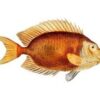Exploring the Use of Dragon Imagery in Political and Military Ceremonies in China
The dragon is one of the most potent and widely recognized symbols in Chinese culture, signifying strength, protection, and divine authority. It is a mythical creature that has transcended its role in folklore, becoming deeply embedded in the political, military, and cultural fabric of Chinese society. The dragon’s influence has been particularly evident in the ceremonial aspects of Chinese political and military life, where its imagery has been used to reinforce power, legitimacy, and the relationship between the emperor, the people, and the divine.
This article delves into the use of dragon imagery in political and military ceremonies throughout Chinese history, exploring its significance in shaping China’s political landscape and its symbolic role in asserting authority and control over military forces. From the imperial court to modern-day political events, the dragon has remained a constant figure in these powerful rituals and traditions.
The Dragon as a Symbol of Imperial Power
In ancient China, the dragon was inextricably linked to the emperor, who was regarded as the “Son of Heaven.” This divine title bestowed upon the emperor by the gods conferred a sacred and legitimate authority over the Chinese empire. The dragon was not only a symbol of the emperor’s political power but also a representation of his connection to the cosmic order, reinforcing his right to rule.
The Emperor and the Dragon
The Chinese emperor’s connection to the dragon symbolized the centralization of power in his hands. The emperor was the sole figure who could wield the authority of the dragon, and its image was carefully curated and incorporated into the political and military structures of the state. The dragon symbolized the emperor’s power to protect the country and ensure its prosperity.
In many imperial palaces, the dragon’s image was displayed on flags, robes, and thrones. The emperor’s throne, for example, was often adorned with embroidered dragon motifs, and only the emperor was allowed to wear garments embroidered with dragons. These garments, typically yellow, were a distinct mark of the emperor’s supreme status. The use of dragons in royal attire and on official insignia ensured that the emperor was identified not only as the ruler of the people but as a divine figure who governed under the authority of the heavens.
Dragon Imagery in Imperial Rituals
Dragon imagery was also central to the religious and political rituals of the imperial court. During important ceremonies, such as the emperor’s coronation, the dragon was invoked as a symbol of legitimacy and divine favor. The presence of the dragon in these rituals reinforced the emperor’s divine right to rule and his role as a protector of the nation.
For instance, the emperor’s annual rain-making ceremony, where prayers for good harvests and rain were offered, often featured dragon-themed rituals. The emperor, as the “Son of the Dragon,” was believed to have the power to summon the dragon to bring rain, ensuring a prosperous harvest and the stability of the empire. This act of invoking the dragon during such ceremonies underscored the emperor’s role as the intermediary between heaven and earth.
The Role of Dragon Imagery in Military Ceremonies
The dragon’s symbolism extended beyond political matters and into the military realm, where it was employed to invoke strength, unity, and divine protection. The military, like the political system, was central to maintaining the emperor’s power, and the dragon served as a powerful emblem of the military’s might and ability to protect the state.
The Dragon in Military Flags and Banners
One of the most notable uses of dragon imagery in military settings was its incorporation into flags and banners. During the imperial era, military banners emblazoned with dragon motifs were used to rally troops and symbolize the might of the emperor’s forces. The dragon, as a symbol of power and victory, was meant to instill fear in enemies and inspire loyalty and courage in soldiers.
For example, the famous “Dragon Standard” (龙旗) was used in the military during various dynastic periods. The dragon on the standard represented not only the emperor’s authority but also the imperial military’s invincibility. The dragon was believed to guide the soldiers to victory, as it was associated with strength and divine protection. Soldiers who marched under the banner of the dragon were considered to be fighting under the direct protection of the heavens.
Dragon Motifs in Military Armor and Weaponry
In addition to flags and banners, dragon imagery was often incorporated into military attire and weaponry. High-ranking military officers, for example, might wear armor or clothing that featured dragon symbols, signaling their elevated status and their connection to the divine. Weapons such as swords and spears were sometimes adorned with dragon motifs to enhance their symbolic power and the morale of the soldiers.
One of the most iconic examples of dragon imagery in military weaponry is the dragon-shaped hilt on a sword or dagger. These dragon-headed weapons were believed to possess supernatural powers, granting the wielder strength and protection in battle. The use of dragon imagery on weapons signified the unity between the military and the divine, reinforcing the idea that the military was fighting not only for the emperor but also under the guidance of heavenly forces.
The Dragon in State Ceremonies and Rituals of War
In times of war, the dragon’s role in political and military ceremonies became even more pronounced. When preparing for battle or when celebrating military victories, dragon imagery was prominently featured in state rituals. These rituals, often carried out in public spaces or temples, sought to invoke the dragon’s favor and ensure success on the battlefield.
The Dragon as a Symbol of Military Strength
In the event of military conflicts, the dragon was frequently invoked to symbolize the strength and invincibility of the Chinese military. During military parades or public ceremonies, the presence of dragon motifs was intended to inspire confidence in the people and instill fear in potential enemies. These ceremonies were often accompanied by elaborate dragon dances, where the movement of the dragon was meant to represent the unstoppable force of the imperial army.
Dragon dances during military festivals were designed not only to honor the emperor but also to show the power and preparedness of the state’s military forces. The dragon, as a mythical creature with control over the elements, was thought to imbue the military with the same power to control the course of war, ensuring the defeat of enemies and the safety of the nation.
Invoking the Dragon During War
Before battles, emperors or military commanders often conducted ceremonies in which the dragon was invoked for protection and guidance. These rituals included prayers to the dragon to ensure military victory, and offerings were made to the dragon to secure its favor. The dragon, viewed as a divine protector, was seen as a figure that could influence the outcome of the conflict, granting success to those who were worthy.
Such ceremonies were also held after military victories to thank the dragon for its assistance. The emperor, once again reaffirming his role as the “Son of the Dragon,” would offer sacrifices and hold celebrations in honor of the dragon for its role in the military triumph.
The Dragon’s Role in Modern Political and Military Events
Even in modern times, dragon imagery continues to play a role in Chinese political and military ceremonies. The Chinese government has maintained a connection to the traditional symbolism of the dragon, which is reflected in the country’s political events, military parades, and national celebrations.
The Dragon in National Ceremonies
In modern China, the dragon remains an enduring symbol of national unity, strength, and resilience. During national holidays and celebrations, such as the National Day or military parades, dragon imagery is often prominently displayed. Large dragon floats or banners may be carried through the streets to symbolize the nation’s power and solidarity. The dragon continues to be used in state functions to emphasize the unity of the Chinese people and their government.
Military Parades and Dragon Imagery
The Chinese military has also maintained the tradition of incorporating dragon imagery into its military parades. The annual National Day military parade, for example, features tanks, missiles, and troops marching under dragon-adorned banners and flags. The use of the dragon in these parades signifies the military’s connection to the country’s rich cultural heritage and its role in defending the state.
Conclusion
The dragon, with its rich symbolism of power, strength, and divine authority, has played a critical role in Chinese political and military ceremonies throughout history. From its association with the emperor’s divine right to rule, to its use in military banners and weaponry, the dragon has served as a constant reminder of the emperor’s sacred duty to protect the state and maintain order. Even today, the dragon continues to be a powerful emblem of political and military might in China, symbolizing the nation’s strength, unity, and connection to the divine. Through its integration into state rituals, military parades, and political events, the dragon remains an enduring symbol of China’s rich history and its continued aspirations for greatness on the world stage.


